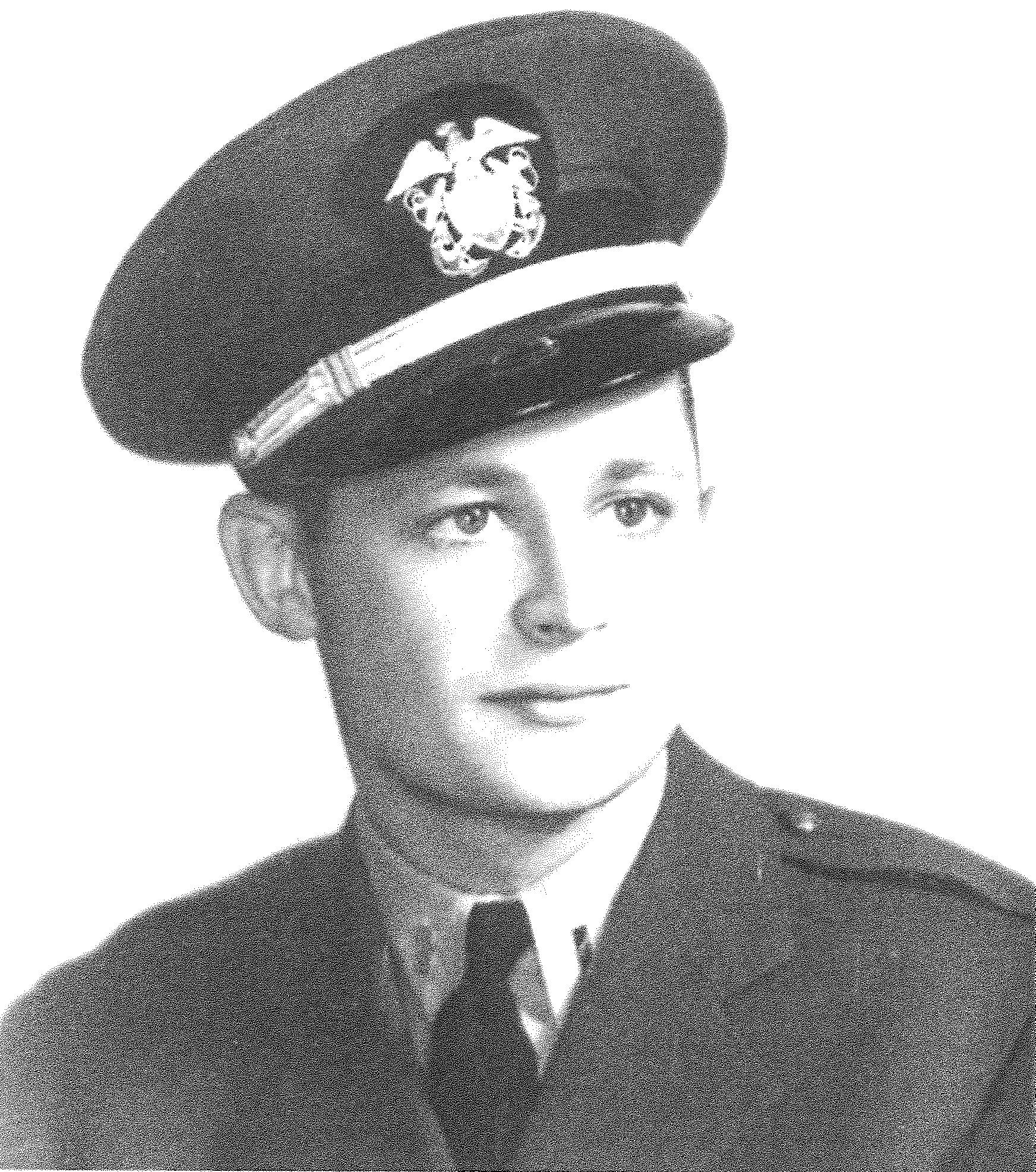
World War II
-
Fallen
Circumstances:
A Tragic Accident.
Although skies were clear, the night was dark over Connecticut and Rhode Island on October 19, 1944 because there was no moon. Two young Naval Reserve pilots from the Charlestown (R.I.) Naval Auxiliary Air Field were flying at an altitude of 6,000 feet, practicing a dangerous
maneuver: night interceptions using a newly developed onboard radar system, in which one plane acted as the enemy target and the other tried to find it in the dark and then approach within firing range.
Ensign George K. Kraus and Ensign Merle H. Longnecker had been flying their Grumamn F6F-5N "Hellcats" for about three and a half hours when something went wrong. Ensign Longnecker was acting as the pursuit plane and had sent the radio message "Splash!" at 11:13 p.m., indicating that he had approached Ensign Kraus's plane close enough to target it and destroy it. That was the last radio transmission heard that night.
The two planes had collided. Residents of Norwich, Connecticut, heard an explosion in the Laurel Hill part of town. Local police and fire crews rushed to the scene, as did an ambulance from Backus Hospital and William H. Bryan, M.D., superintendent of the nearby Norwich State Hospital. A detail of state troopers from the Groton barracks also responded. Because the planes crashed in a heavily wooded area, it took the would-be rescuers about 25 minutes to hike to the impact area. Both pilots were dead, and the wreckage of the two planes, which came to rest about a quarter mile apart, were burning. Navy personnel from the auxiliary air base at Groton secured the area and removed the bodies of the two pilots the following day, taking them to the infirmary at the Quonset Point Air Field in Rhode Island. Salvage crews were sent to the site but found little worth saving. Reportedly, the Navy buried much of the wreckage in trenches near the impact points.
According to a local newspaper, the New London Day, eyewitness reports indicated that the two planes had scraped wings, then veered away from each other, and finally plummeted to the ground near the Norwich-Preston town line. The official Navy accident report speculated that the pursuit plane had misjudged the target's speed and had overtaken it too fast. The planes were flying approximately 175 mph at the time.
Flight training was an inherently dangerous activity, since the goal was always to get as close to combat conditions as possible. The collision over Norwich was the third crash that week involving fliers from Charlestown. The previous night, a night-fighter Hellcat had crashed into a house in Groton when the pilot, experiencing difficulties, tried to ditch his plane in the Thames River. Miraculously, no one was seriously injured. A few days earlier, another Charlestown aircraft had crashed off Montauk Point, Long Island, where a passing fishing boat rescued the pilot.
Source: "World War II Hellcat Sites" State Archaeological Preserves, Site No. 114-137. Site No. 114-138 Preston, Connecticut. Connecticut State Historic Preservation Office.
Biography:
